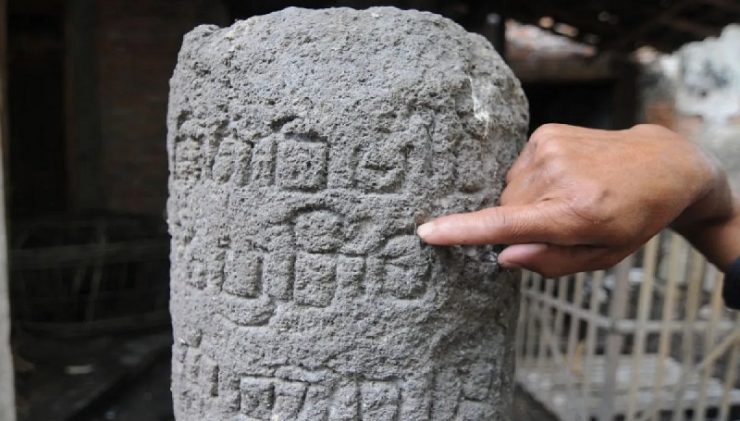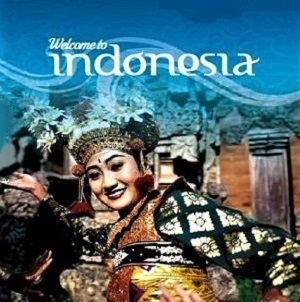AT THE foot of Mount Penanggungan, Mojokerto, East Java, once stood the Pucangan Inscription, a silent witness to the history of the glory of King Airlangga.
The inscribed stone is not only the story of a great king’s journey, but also a symbol of the greatness of Nusantara culture. Now there is hope that the historic inscription will soon return to the bosom of Mother Earth after hundreds of years away from its homeland.
The inscription tells the story of Airlangga’s struggle to escape the destruction of the Medang Palace and eventually establish the Kahuripan Kingdom.
The history-laden relic also tells the story of the king’s great decision to divide his kingdom into Janggala and Panjalu in order to maintain peace. With carvings in Old Javanese script and Sanskrit, the inscription is a true manifestation of the beauty of literature and political policy at that time.
Efforts to return
In diplomatic relations between Indonesia and India, there is great hope that the President will also bring with him during his visit to the land of Bollywood on January 26.
In addition to strengthening strategic cooperation, the visit was also to seek the return of the Pucangan Inscription, a historical relic that holds a great story about King Airlangga and the ancestors of the archipelago.
“We hope that the President’s visit to India will also include the return of the Pucangan Inscription, which is an important inscription for us because it contains the genealogy of the kings of Airlangga, Mpu Sindok, you know,” said Minister of Culture Fadli Zon.
The inscription, now neatly stored in the Indian Museum in Kolkata, is not just an inscribed stone. It is a silent witness to the journey of history that links the great name of King Airlangga to the founder of the Isyana dynasty, Mpu Sendok.
The inscription contains the genealogy of the kings who became the foundation of the great civilization of Java in the 10th and 11th centuries. The Pucangan inscription contains a priceless story of how Airlangga, a king who had to survive amidst political turmoil, restored the glory of the archipelago through wisdom and sacrifice.
The stone also serves as a link between the Isyana dynasty and the era of Kahuripan’s glory. But the story does not end there. Much hope now rests on the efforts of cultural diplomacy to bring the inscription back to the homeland.
The return of the Pucangan Inscription is not only about restoring historical artifacts, but also about passing on the great story of the archipelago to the next generation.
Like Airlangga, who returned from his flight to build Kahuripan, the inscription is expected to once again become a symbol of national revival and identity.
If it ever returns, the Pucangan Inscription will be the center of attention, standing firmly in the National Museum as the guardian of the stories of the ancestors, inspiring all who see it.
And when the inscription finally touches the ground of Indonesia again, it will remind us that history is a legacy that must not be lost, a root that makes this nation stand tall amidst the challenges of the times.
History of Indonesia
Behind the splendor of East Java’s past civilizations lies an inscription full of mystery and tales of heroism.
The Pucangan Inscription, a historical relic from the 11th century, was discovered during the British colonial period in the archipelago in 1812, when Thomas Stamford Raffles was Lieutenant Governor of Batavia.
However, instead of staying at home, the inscription was taken to India as part of the private collection of Lord Minto, the British Governor General. Today, the inscription is preserved in a museum in Kolkata, India.
The Pucangan inscription contains two different stories written in two languages, Old Javanese and Sanskrit, but both use the Kawi script.
The form of this inscription is unique, in the shape of a stone block with a pointed top and a lotus-shaped base, a typical symbol of Hindu-Buddhist greatness.
Its name comes from the word “Pucangan”, which refers to the order to build a hermitage in Pucangan, the area around Mt. Penanggungan, Mojokerto.
The content of the inscription records the genealogy of King Airlangga and various important events surrounding him. The Sanskrit section describes the journey of Airlangga, a great king of the Isyana dynasty.
From his ancestor Mpu Sindok to the birth of Airlangga from the couple Mahendradatta and Udayana. This story includes the struggle of Airlangga who had to flee to the forest with Mpu Narotama after the palace was burnt down by the attack of King Wurawari in 1016 AD.
After the exile, the people, led by the Brahmanas, begged Airlangga to become king. Airlangga rose to his feet and fought several battles until he finally defeated all his enemies in 1037 AD and was crowned king.
As a form of gratitude, he built a hermitage in Pugawat to worship the gods. Meanwhile, the Old Javanese side recorded an important momentum on November 6, 1041.
On that day, Airlangga, who had been titled Sri Maharaja Rakai Halu Sri Lokeswara Dharmawangsa Airlangga Anantawiramottunggadewa, designated the areas of Pucangan, Brahem, and Bapuri as sima (holy land) to support the hermitage he had built.
The decision was a manifestation of Airlangga’s promise after the destruction of Java Island by the attack of King Wurawari. The Pucangan inscription is not just an inscribed stone, it is a witness to the glorious times, struggles and sacrifices of a king who changed the history of Java.
Although now far from his homeland, this inscription remains a reminder of the strength and wisdom of Airlangga, a leader who rebuilt civilization from destruction. The Pucangan inscription teaches that revival from ruin is an eternal path. [antaranews]
















